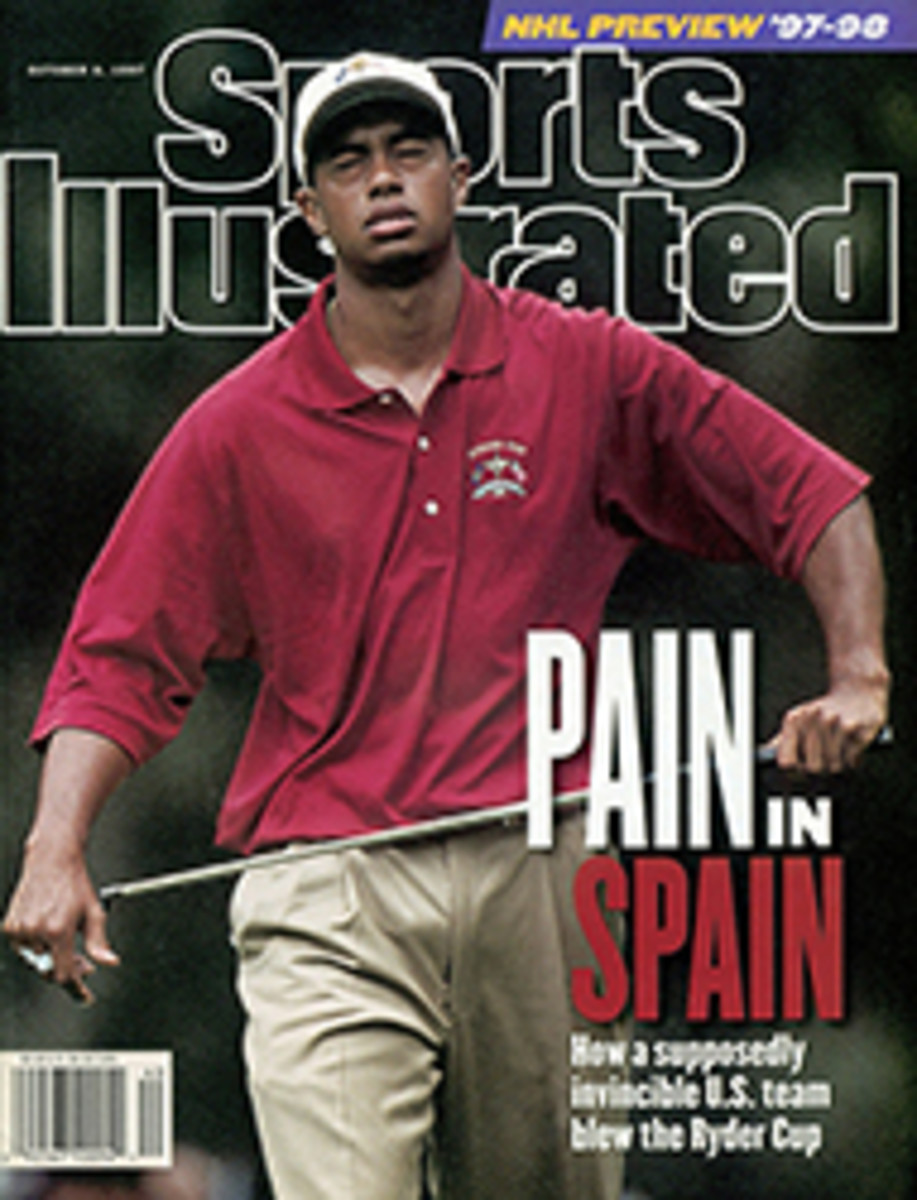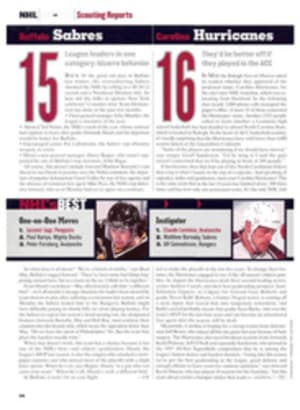
LITTLE MAN WITH BIG CAMERA IZZY KAPLAN TOOK PICTURES IN AN ERA WHEN BUFFOONERY WAS PRACTICED AS AN ART
While on assignment in New Orleans in 1922, Israel Solomon
Kaplan, a man who hid his ethnicity only slightly better than
Richard Simmons hides his leg warmers, was bombarded by notes
sent to his hotel room. The first was from the Ku Klux Klan,
which was roaring with power in Dixie at the time, warning him
to get out of town within 24 hours.
The second was, again, from the KKK: "Get out of town in 12
hours or else." The third was a final threat: "You now have only
six hours to get out of town."
Kaplan, a little man with nerves of Jell-O, moved his bed
against the door, disconnected the phone, took a double dose of
sleeping powder and still slept nary a wink. The next morning a
telegram was delivered to his room. Its message was the most
alarming of all: Proceed at once to the Ku Klux Klan conclave
and get a photograph of the Imperial Wizard, Dr. Hiram Evans.
So here was Kaplan, a New York Tribune sports photographer,
looking down at a death sentence delivered unceremoniously by
his employer. According to a feature story in the March 9, 1940,
edition of Collier's that recounts the episode, Kaplan had been
sent to New Orleans to cover spring training with the New York
Yankees and other related stories his editors came up with. But
this was something totally different. This was a Jew having to
stroll up to KKK headquarters carrying a camera.
"I should like it a peecture of de beeg boss--what you call him,
de Imperial Gizzard?" Kaplan told a robed guard, his Lithuanian
accent strong on each word.
"What's your name?" snapped the Klansman.
"Israel Solomon Kaplan," he replied, emphasizing each syllable.
The guard slammed the door in Izzy's face. A few minutes later
he reappeared and said, "The Imperial Wizard will see you."
Kaplan quickly entered the building, waddling past a swarm of
hooded goons and up to the exalted Evans. He pulled out the
telegram and gave it to Evans to read.
Evans looked Kaplan up and down for a moment and then--to the
shock of his gathered brethren--removed his hood and gave a
grand political smile. Kaplan's flash exploded like a cherry
tomato, each click accompanied by a loud poof! and a burst of
light. Kaplan took a few more shots, then signaled to Evans that
he was finished.
"Are you sure there's nothing else?" asked the Imperial Wizard.
"Oh, yas!" said Kaplan, taking the hotel notes from his pocket.
"I'm having a leedle trouble wit your boys. Could I have, mabbe,
a pass wheech they shouldn't bother me?"
Evans didn't hesitate, pulling out a piece of paper and a pen.
"To all Klansmen," he wrote. "Do not bother Israel Solomon
Kaplan."
Some 75 years later a tiny green suitcase reminds us that the
notes, all four of them, were written by a group of mischievous
journalists in town--that the Tribune editors had no idea that
their photographer was mingling with the Klan. The episode,
retold countless times by the giddy pranksters, became part of
Izzy's legend. We are reminded of the time Izzy Kaplan posed in
New York Yankees catcher's garb. Of the time he asked the New
York Giants manager why his team's stadium was called "da Polish
Grounds." Of the time he asked Queen Marie of Romania--calling
her "Queenie"--to lift her skirt. We are reminded of one of the
most engaging U.S. sports photographers of all time, and how he
has been almost forgotten.
"There are a lot of stories about Israel," says Annette Wolfe,
72, Kaplan's niece and one of his few remaining relatives who
knew him. "He was very well known, you know." This past tense
brings us to the suitcase. For nearly 50 years, since Kaplan
died at 63 on April 4, 1949, Wolfe, a resident of Queens, N.Y.,
has kept her uncle's legacy locked up under her bed like a
schoolgirl's diary. The dust-covered green box is his last real
link to fame.
In it are hundreds of Kaplan's photos, negatives and glass
slides depicting the sports stars of his time, from Sugar Ray
Robinson to Joe DiMaggio to Yogi Berra to Sid Luckman. When Babe
Ruth made his fabled farewell appearance at Yankee Stadium, in
1948, Kaplan's picture of it was on the back page of the Mirror,
which was a tabloid paper. There is Joe Louis defending his
world heavyweight title at Madison Square Garden in '39, and
there are NFL championship games. Some of the shots are serious:
team photos, right jabs to the head, a check into the boards.
Others are not: Kaplan drenched in fake blood; the Yankees
wearing mismatched equipment, the pitcher with a catcher's mitt
and a chest protector. Although Kaplan took the occasional
picture of a Queen Marie, most of the photos in the suitcase are
of his main love: sports. "He was always involved," remembers
Wolfe. "I believe going to games and being with players were his
favorite things in the world."
Newspaper clippings also take up space in the suitcase, mostly
columns by Dan Parker, the Mirror writer who regularly used the
colorful Kaplan as a character in his column about the New York
sports scene. The clippings are yellowed, but most are still
legible. They tell some amazing long-lost tales about the era.
Wolfe, who was a girl during her Uncle Izzy's prime, pleads
negligence to the charge of hiding his work under her bed. "I
always knew it was there," she says. "But since my last name
isn't the same as his, no one ever asked about Izzy. There was
never a reason to take the pictures out." So they sat. And sat.
Recently Annette's sons, Ira and Allan Wolfe, dug through the
suitcase, finding both a key to their past and, as Ira puts it,
"some really, really cool stuff. He was an interesting guy. It's
sad that people don't know about him anymore. He wasn't your
ordinary photographer."
Not even close. Born in Lithuania in 1895, he emigrated to the
U.S. in 1912, making the journey by himself and settling in New
York City. Later his parents and three sisters joined him. He
eventually got into the newspaper trade because, as he often
said, it seemed like an easy way to make a living. He served as
a first lieutenant in the U.S. Army in World War I, then was
hired by The New York Tribune, one of a dozen major dailies in
the city, before joining the Daily Mirror in 1925. He was never
a great photographer. "He was slow," says Bob Wendlinger, 75,
who was a freelancer for the Mirror in the '40s, "but he would
usually get the good picture anyway." In fact Kaplan was as much
an unintentional comedian as a newspaperman. "He was a complete
slob," Wendlinger says, laughing. "He would have a jacket from
one outfit, a vest from another and pants from another."
"He was always chomping on a big cigar," adds Leon Hoffman, 82,
another Mirror photographer.
In his time Kaplan "was often cheered more lustily than the
athletes when he made his appearance in Madison Square Garden or
Yankee Stadium," his New York Times obituary said. His trademark
salute, "Hrrayah, kid," reflected more than just an immigrant's
poor speech. Kaplan was a symbol of the newspapers' golden age:
a hard-drinking, heavy-smoking photographer who wouldn't just
shoot the athletes but would also form a bond with them. He
wasn't big--no more than 5'7"--and baseball players loved to
imitate both the ducklike way he strolled onto the field and the
jagged edges of his words. ("Vot's all aboud it, annahull?"
Kaplan would ask.)
On the same spring training trip to New Orleans during which he
was tricked into photographing the Klan, Kaplan was convinced
(actually, ordered) by some of the Yankees to try on the uniform
of James (Truck) Hannah, a man whose hugeness befit his moniker.
For an hour the Yanks hammered fly balls to Izzy, who tripped
over his three-sizes-too-large outfit every step of the way.
Most of all, however, those who knew Kaplan told stories. To
understand Izzy is to understand that he didn't quite get
things. Kaplan went on assorted snipe hunts with sportswriters,
always winding up holding an empty bag in the empty woods. At a
hotel once he appeared for a phantom banquet supposedly arranged
by other photographers in his honor, then returned to his room
and slipped into bed, where he found a snake and a baby alligator.
Then there were the ghosts. In another Izzy tale recounted in
the same Collier's article, Kaplan, while on a trip to Georgia,
bolted from his dark hotel room screaming, "Halp! Halp!" In the
lobby he told the night clerk, "It's full from ghosts, mine
room!" Together they returned to the room, where--with the light
flicked on--they found the floor, bed and bathtub full of white
ducks.
A bit suspicious, Kaplan returned to the lobby, where he
encountered Damon Runyon, the famed sports scribe. "Were the
windows open?" Runyon asked.
"Yas!" Izzy said.
"Well, a flock of wild ducks probably flew in."
Kaplan looked at Runyon, his eyes piercingly mad. "Oh, yeah?" he
replied. "Well, mabbe de docks is toining on de water in de
bathtub, too, ain't it?"
B/W PHOTO: COURTESY OF ANNETTE WOLFE Kaplan's odd sartorial taste made him as recognizable to fans as some athletes he shot. [Izzy Kaplan]
B/W PHOTO: IZZY KAPLAN/COURTESY OF ANNETTE WOLFE Kaplan captured the moment in the 1939 title fight between champ Joe Louis and Tony Galento. [Joe Louis and Tony Galento boxing]

